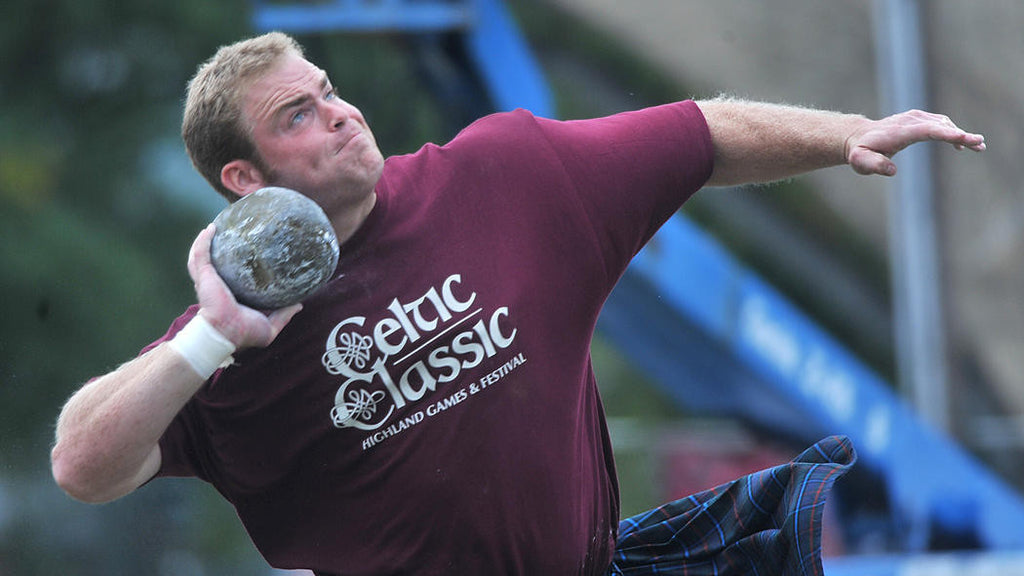With the offseason in full swing, I am seeing more and more approaches and outlines for people's offseason plans. One of the things I find in increased popularity is mobility and even flexibility as a way for athletes to improve their throws. While increased flexibility is never a bad thing, is it really a needed focus for the off-season? The arguments I hear are:
- He/she feels their lack of perceived mobilit keeps them from hitting the correct positions in the throws.
- He/she thinks that if they can get to postions of greater torque, then they will automatically throw further (i.e. a longer push on the stone, longer applied speed to the hammer, etc)
I am not saying to avoid mobility and flexibility work, I'm just saying let's not pretend that increased self myofascial release means bigger throws come August and September. Those come from getting stupid strong and taking thousands of throws on the practice field.
If you really want to look at it, your increased mobility and flexibility may put you in an even worse position now. You have not addressed the real problem - your technical deficiencies. Which leads me to that first argument, to which we must admit; as throwers, our inability to hit postions isn't a by product of tight muscles, but rather a direct result of our practice. There is no shortcut or easy route to big throws - it takes reps and reps and reps.
For throwing, there is something to be said about rigidity of muscles and overall stability strength, which doesn't come from being Stretch Armstrong.
I have looked at throwers through history to find out what the very best have done to take them to that level. Instead of creating a new path to greatness, why not use their model and adapt it to our personal approach? What similarities there are between them? What things do they all do that makes them "the greatest?" Chances are, you can really streamline your focus, time, and effort needed. Because, let's be honest, we are all adults in this sport with a myriad of responsibilities besides throwing. Our time is so much more limited than a full-time professional athlete or collegiate athlete and we must spend our time doing the very most important things. If not, then we're just turning our wheels doing minor things hoping for major results.
I struggle to find one of the greats whose incredible flexibility made them a great thrower. I would bet, though, you'd admit that many of them were very strong, and all of them we're very explosive for men for their size.
So, this offseason, while you are rolling, stretching and doing the things to take care of your body and allow yourself to train, let's not pretend that it's the secret to make you throw bombs this year. Go ahead and do the little things that make your body feel good and help improve deficiencies through stretching and mobility work, but focus on improving the things that we know translate to big throws for the next season.


Dave Brown
Dan – This is a great wake-up article and you’re right that folks don’t need to do the splits or clap behind their backs to throw bombs. But, I would also say that the movement patterns rehearsed over and over during the off-season will directly relate to throws next spring – meaning that if you incorporate cleans and snatches from relaxed arms (let them hang like ropes), then you’re more likely to use more hips and back which will connect your system better for throws. I see lots of guys go straight to bench and rows, but no cleans or snatches, and this will lead to a frustrating season when it comes.
I also agree on the countless throws that are made – again, the emphasis is good throws (the old adage that practice doesn’t make perfect… perfect practice makes perfect). Even in throwing, being relaxed and long makes a big difference and I think there’s some folks that confuse relaxed and long with flexible and mobile. These are entirely different. Connection of the lower body up to the implement in a long, relaxed, and dynamic manner is the single most important pattern to develop and rehearse over and over. There may be some specific mobility issues (too much bench for most or too may rows and not enough cleans in the gym) that can get in the way of relaxed throws and folks just need to identify some specific areas for improvement – for most of us in the heavy events, it’s hammer and lots of reps has a funny way of stretching us out :)
Now… gotta admit the age demographic is no longer just 20-40 for the iron games (or all sports it seems) and folks 40, 50, 60 and above love to still train and compete. For those upper folks, there’s definitely a component of stretching that becomes mandatory rather than optional. Without it, bodies tighten up, movements get harder and the passion for the sport goes away. Keep the fire alive, invest just 5-10 minutes at the end of each workout or session, and still apply the same principles mentioned above.
All the best holiday wishes Dan – thanks for prompting some thoughts!
Dave Brown